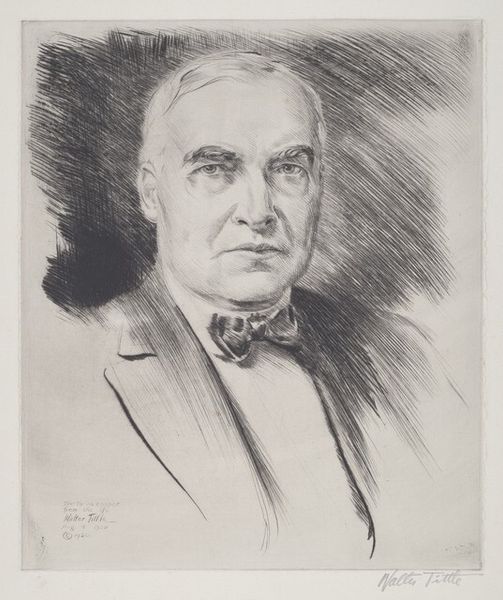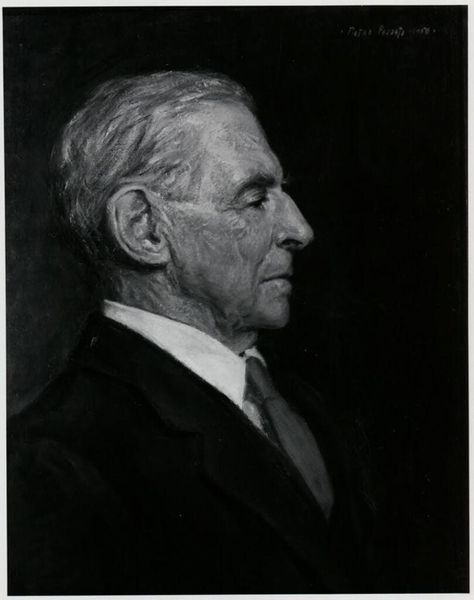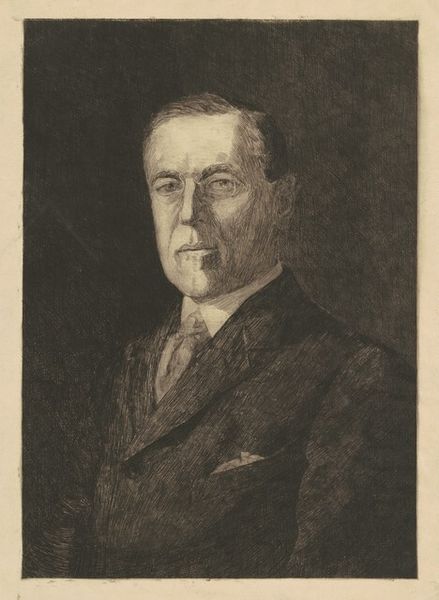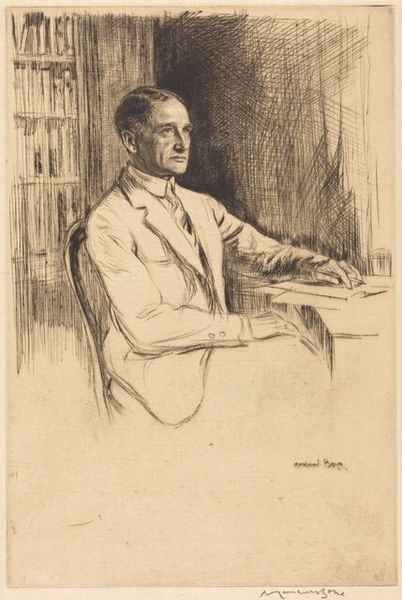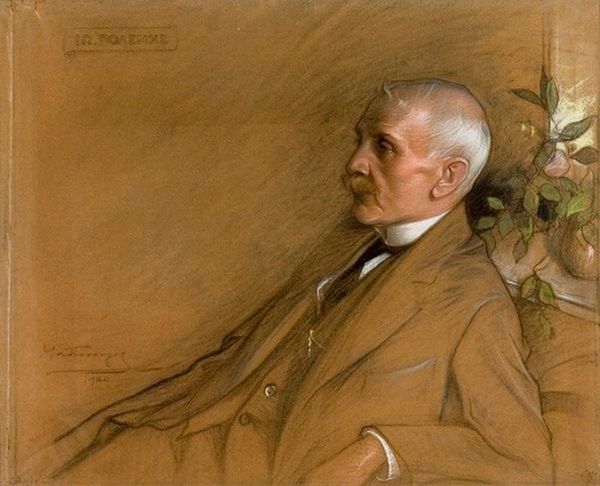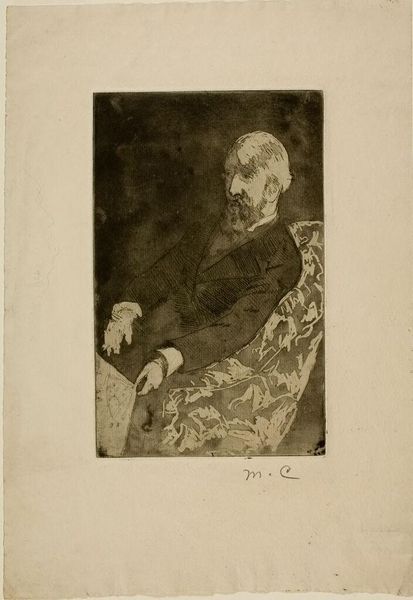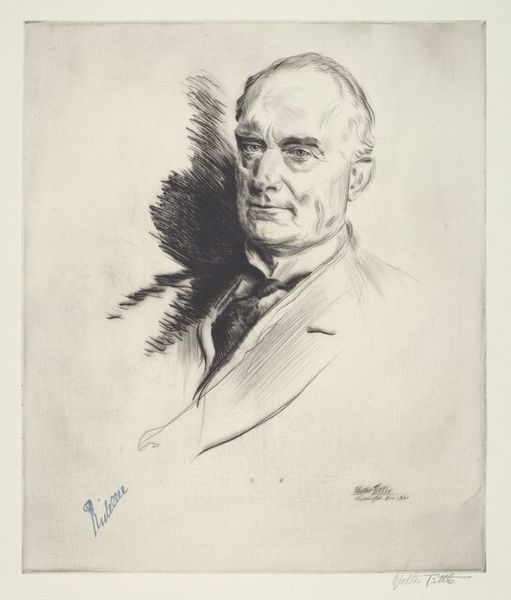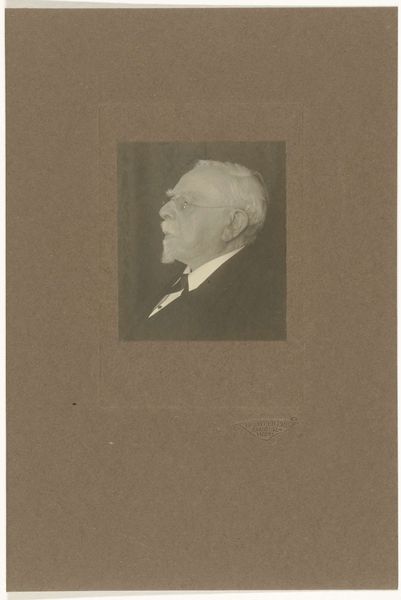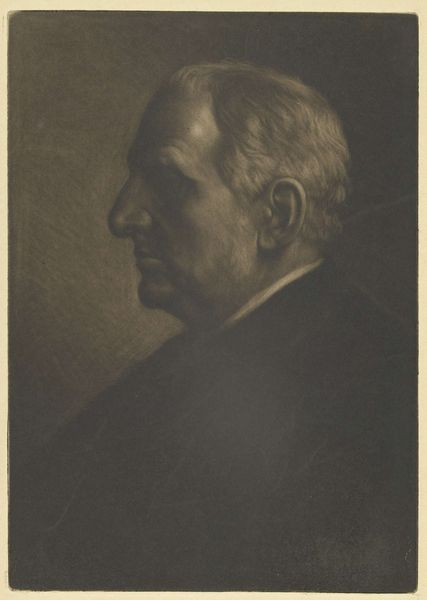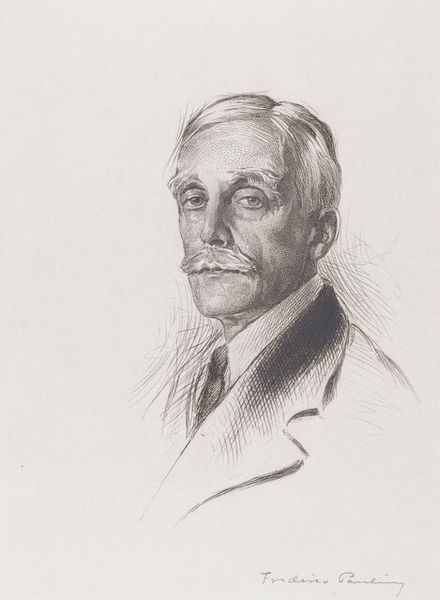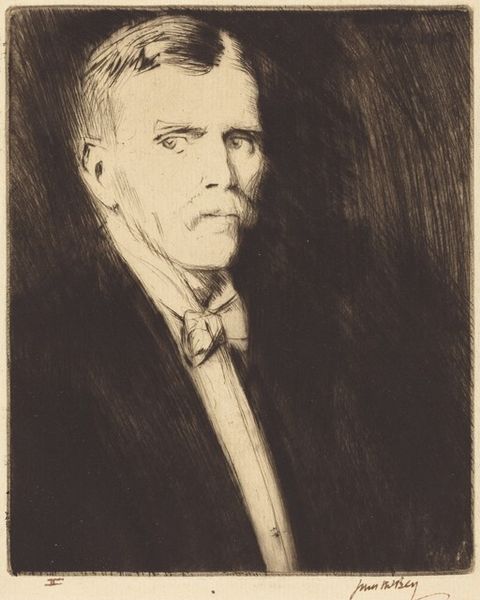
drawing, print, pencil, graphite, charcoal
#
portrait
#
drawing
# print
#
charcoal drawing
#
pencil drawing
#
pencil
#
graphite
#
charcoal
Copyright: National Gallery of Art: CC0 1.0
Editor: This drawing, titled "Andrew W. Mellon" by Frederick T. Reynolds, appears to be made with graphite, charcoal, or pencil, giving it a somber feel. It looks like a print reproduction. The subject is holding some kind of note. How would you interpret this portrait, considering its historical context? Curator: The portrait is quite traditional in its presentation, echoing academic styles favored by institutions that reproduced and disseminated this kind of image. Reynolds' choice to create a print allowed for broader circulation of Mellon's image. This immediately signals a deliberate attempt to shape public perception, and positions Mellon within a lineage of respected, powerful figures, perhaps to amplify authority and legitimacy. What is your feeling about the soft rendering? Editor: The softness and limited mid-tones almost feel like the image is withholding something. Like it's not offering a full view of the person. Does that soft touch relate to the perception that powerful people in the past controlled how the public saw them? Curator: Precisely. Reynolds might have aimed to soften Mellon's features, projecting a gentler, more approachable persona while still maintaining a sense of authority. Consider, too, how portraits, distributed through printed media, solidified the reputations, particularly of those involved in public life. What effect might the relatively modest size of the work contribute to its public reception? Editor: The size definitely makes it seem more intimate. Not as imposing as an enormous oil painting would be. This makes it feel more accessible. Curator: Precisely. A smaller image allows people to feel closer to figures of power. Studying pieces like this, the deliberate creation of a public image and its cultural implications become fascinating topics. Editor: I never thought about how printing the image democratizes it and lets it reach more people. Thank you! Curator: A pleasure. It shows us the subtle power of artistic choices.
Comments
No comments
Be the first to comment and join the conversation on the ultimate creative platform.
